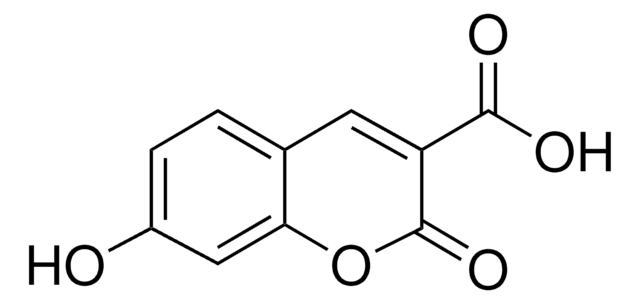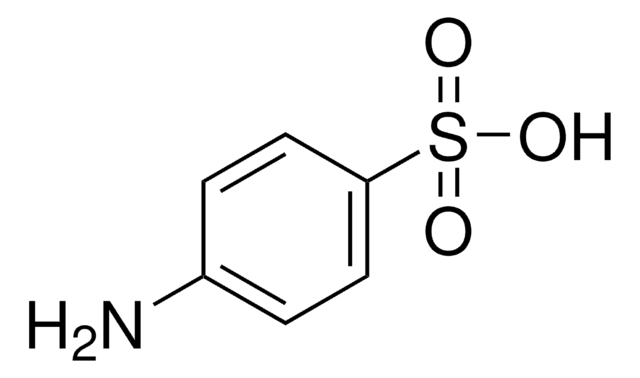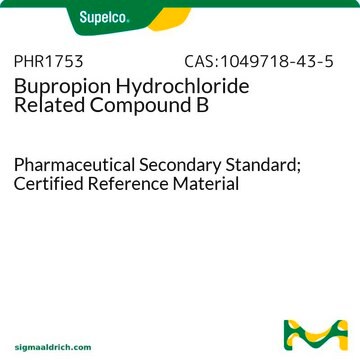B102
Bupropion hydrochloride
≥98% (HPLC), solid, dopamine and norepinephrine transporter inhibitor
Synonym(s):
(±)-1-(3-Chlorophenyl)-2-[(1,1-dimethylethyl)amino]-1-propanone hydrochloride
About This Item
Recommended Products
Product Name
Bupropion hydrochloride, ≥98% (HPLC), solid
assay
≥98% (HPLC)
form
solid
color
white
solubility
H2O: 15 mg/mL, clear
originator
GlaxoSmithKline
SMILES string
Cl[H].CC(NC(C)(C)C)C(=O)c1cccc(Cl)c1
InChI
1S/C13H18ClNO.ClH/c1-9(15-13(2,3)4)12(16)10-6-5-7-11(14)8-10;/h5-9,15H,1-4H3;1H
Inchi Key
HEYVINCGKDONRU-UHFFFAOYSA-N
Gene Information
human ... DRD1(1812) , DRD2(1813) , DRD3(1814) , DRD4(1815) , DRD5(1816) , SLC6A2(6530) , SLC6A3(6531)
Looking for similar products? Visit Product Comparison Guide
General description
Application
Biochem/physiol Actions
Features and Benefits
Choose from one of the most recent versions:
Certificates of Analysis (COA)
Don't see the Right Version?
If you require a particular version, you can look up a specific certificate by the Lot or Batch number.
Already Own This Product?
Find documentation for the products that you have recently purchased in the Document Library.
Customers Also Viewed
Articles
Discover Bioactive Small Molecules for ADME/Tox
DISCOVER Bioactive Small Molecules for Neuroscience
Our team of scientists has experience in all areas of research including Life Science, Material Science, Chemical Synthesis, Chromatography, Analytical and many others.
Contact Technical Service














